How animals migrate might be one of wildlife’s greatest mysteries. Salmon are no exception.
They hatch in a gravel bed in a stream somewhere deep in the wilderness, wiggle up into water current and eventually enter an overwhelmingly vast ocean. After years of swimming with whales and avoiding sharks, they travel sometimes thousands of miles back to that same little stream in that same wilderness where they reproduce and die.
But how does something with a brain the size of a golf ball know how to navigate the world’s biggest bodies of water? The answer sounds like science fiction: Salmon brains communicate with the Earth’s magnetic field.
While scientists have known about salmon’s connection with the planet’s magnetic fields for years, they didn’t know how much of it was learned behavior or instinctual.
Using landlocked salmon from Maine, a gigantic fish tank in Oregon, and a series of wooden frames wrapped in copper wire, researchers got their answer, published Oct. 8 in the Proceedings of the National Academy of Sciences. The results raised more questions than they answered, with potential implications on the world’s controversial salmon aquaculture industry.
“It doesn’t really have an answer to give, but it does have a question to give,” says Nathan Putman, co-lead author on the paper and senior scientist at LGL Ecological Research Associates. “The question is, do these Atlantic salmon, and maybe other salmon as well, have some navigational tools that they can use when introduced into novel habitats that mean they are not likely to just wander lost?”
In other words: Could an escaped hatchery salmon migrate its way to wild salmon habitat, even if its lineage has not migrated in thousands of years?
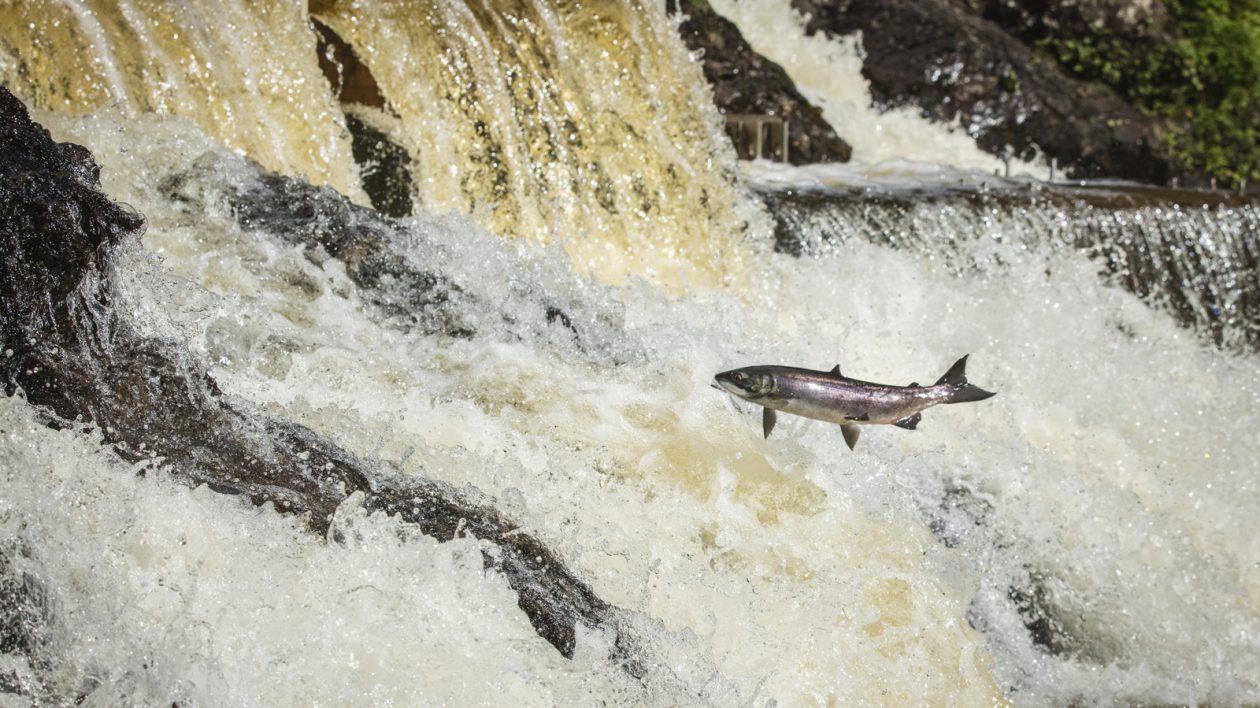
A Primer on Magnetic Migration
Before breaking down the specifics of how a fish tank and coil of copper wire can prove that non-migratory salmon know how to migrate, here’s a quick primer on magnetic migration.
As you know from science class, the planet has magnetic poles that act in a predictable way. They’re strongest at the north and south and weakest near the equator.
For humans, who don’t generally have the ability to sense the Earth’s magnetic pulls, this is pretty irrelevant. For some animal species however, it’s life and death.
“How do you know you’re in the northern portion or eastern side of the Atlantic or western side of Atlantic? It’s big and blue and wet and salty, how do you know where you are? We’ve shown lots of diverse ocean migrants can tell where they are based on what magnetic conditions they are experiencing,” Putman says.
Think of it as a glitchy internal GPS.
Today’s GPS, like those in your smart phone or car, will take you on the most direct route to an exact location.
A salmon’s internal map, on the other hand, is more like an outdated GPS that occasionally loses its satellite link, Putman wrote in a September issue of Current Biology. The salmon will eventually arrive to its destination using its magnetic map, just as a person dropped in a new town would eventually arrive at a hotel (although the human’s route would likely be more circuitous).
On a really basic level, the magnetism means if a Pacific salmon strays too far south, and the Earth’s pull becomes weaker and the angle at which the magnetic pull strikes the Earth is more parallel, it knows to head back north where the force is stronger.
It’s just one of the handful of tools salmon use for migrating. Their sense of smell likely leads them back to the precise stream where they hatched and were reared.
But even after a 1983 study first demonstrated that salmon used compass information, researchers still didn’t know if it was an ability salmon had because their parents migrated or if it was part of their permanent genetic makeup.
So Putman and several other researchers at Oregon State University turned to a crop of Atlantic salmon at a soon-to-be-retired Oregon fish hatchery. The fish originally came from a population of salmon in Maine that hadn’t migrated to the ocean in probably thousands of years, which meant not only were they a different genus, they were also countless generations removed from migrating.
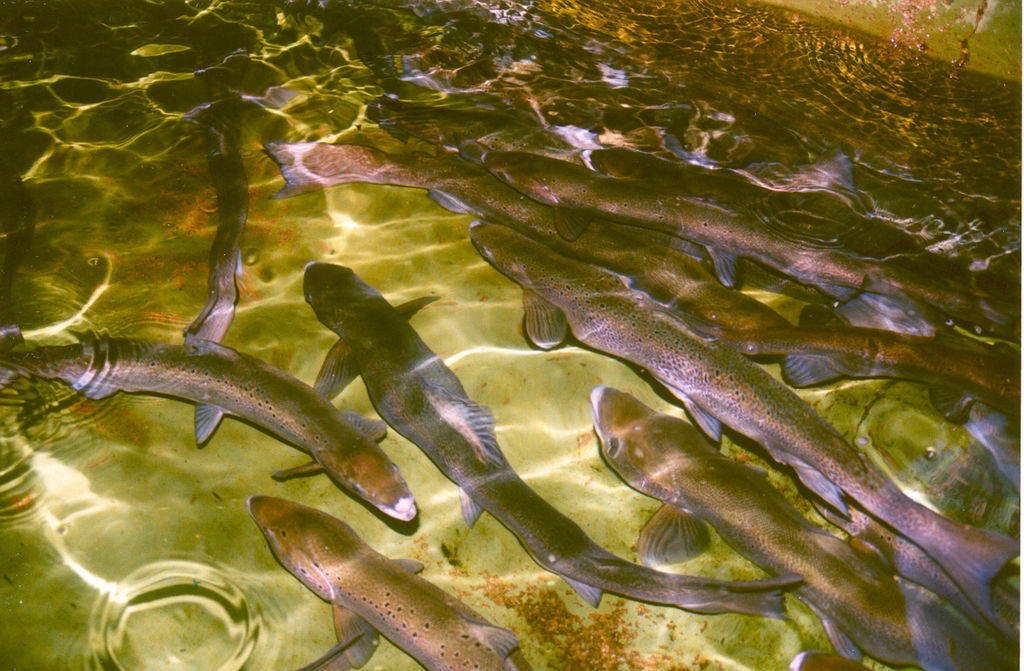
Physics and Fish
Figuring out how a fish responds to the Earth’s magnetic pull is logistically easier than it sounds.
“We do this based on some really simple physics — 1800s level physics. If you have a wire and run electric current through it, it induces a magnetic field,” Putman says.
First, wrap copper wire around a wooden frame and place it around a fish tank at a hatchery with a swimming salmon. Next, figure out, on a small scale, the Earth’s magnetic pull.
Then ramp up the current.
Fish will ever-so-slightly move their heads in the direction of the magnetic current.
“What we are looking for is on the statistical level. We had fish going in all 360 degree directions, but on average, if you average the angles you would see there is a significant bias toward the north when you give them the southern magnetic field,” Putman says. “If you gave me a fish and said would you bet $500 you can make it swim south, I would say no. If you gave me 200 fish, I would bet you I could guess the average direction.”
Everything else is controlled. The hatchery fish are in buckets of their home water, in the tanks they’ve lived in their entire lives. There’s no reason for them to want to veer any direction in particular other than magnetic current.
To measure the movement, the researchers used map overlays and cameras that took hundreds of images, says Michelle Scanlan, co-lead author of the paper and a faculty research assistant at Oregon State University.
They tested more than 1,100 individual salmon with GoPro cameras mounted above taking photos throughout the trial.
A bystander peering over the tank wouldn’t notice a shift in the fish, but taken as a whole and analyzed, the differences were clear.
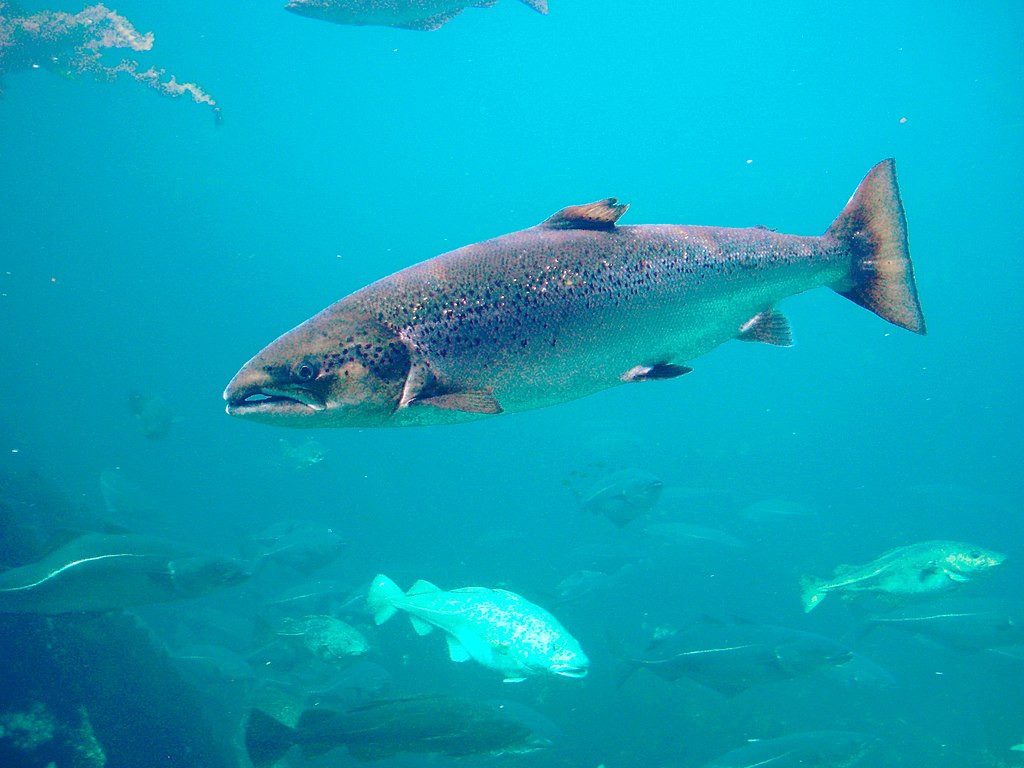
The Implications
It’s a little too early to know the implications, and it depends a lot on who you ask. Even the paper’s four authors vary on the application.
“We all agree it might mean something, and to know what it means would require experiments designed to test that question,” Putman says.
For Putman, the study could mean that escaped pen-raised salmon won’t simply wander into the ocean’s great abyss to be consumed by bigger predators. It could mean that they migrate – pulled by the Earth’s magnetic forces – alongside their native salmon counterparts. If they then wander up streams and rivers, they could breed, potentially spreading disease and weaker genetics.
“People are going to make decisions one way or another about everything. My role is to give people the best information possible to make decisions,” he says. “If you are going to have net pens filled with nonindigenous fishes, you should know something about their sensory biology.”
Scanlan is less sure about what the study means for the multi-billion-dollar captive salmon industry.
“There’s concern about how they escape and where they go, but how the magnetic part plays into this, remains to be seen,” she says. “It shows that salmon that are in hatcheries not only know that there are differences in the fields and can find the best forage, they course correct similar to Pacific salmon to head north.”
The team’s paper, appropriately called “Magnetic map in nonanadromous salmon,” ends with a plea for the importance of more work on migration abilities:
“… Given the rapid pace of global climate change, anthropogenic alterations of habitats, and widespread introductions of potentially invasive species, such research deserves prioritization.”
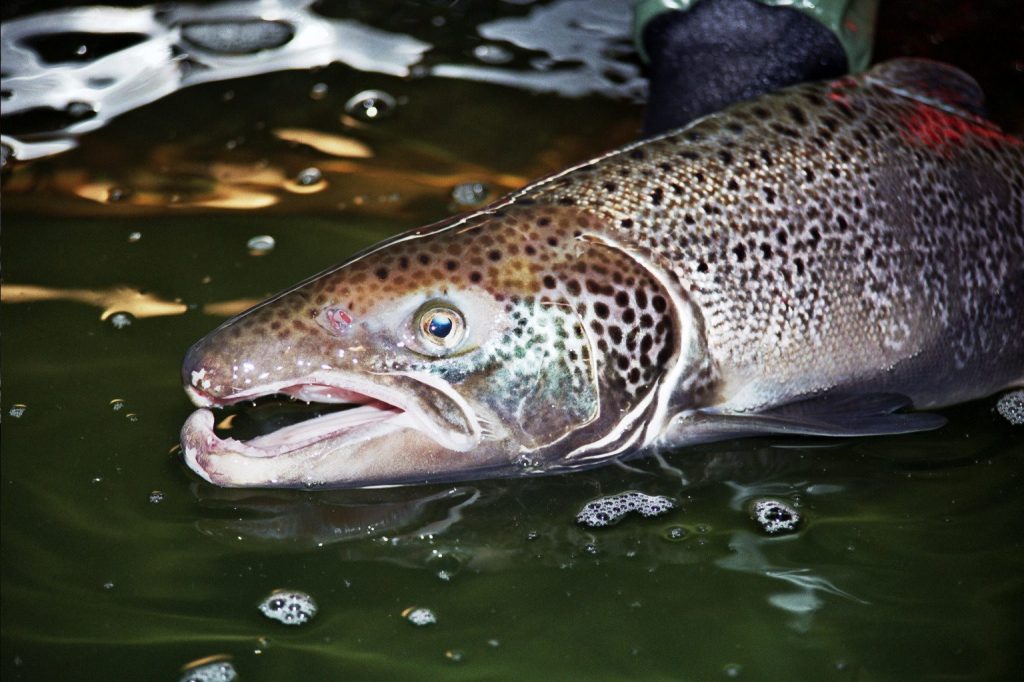


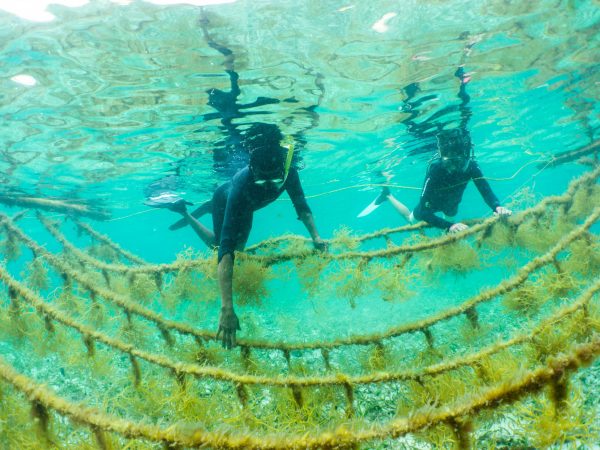
Hi. I ask whether or not the shifting magnetic north is affecting salmon migration and therefor causing lack of a diminished number in the migration?
I enjoyed the article but why no mention of the mineral magnetite, or the salmons’ pineal organ, and its pineal membrane and shields, which record the sun’s declination and photoperiod, and the role of the hormone thyroxine once the fish enters a natal/ suitable watercourse for spawning? An interesting question and one still not answered would be how does a salmon know where to go in the ocean once it leaves its fresh water. Now that’s a mystery!
A good reason to stop raising penned Atlantic salmon in the Pacific Northwest!